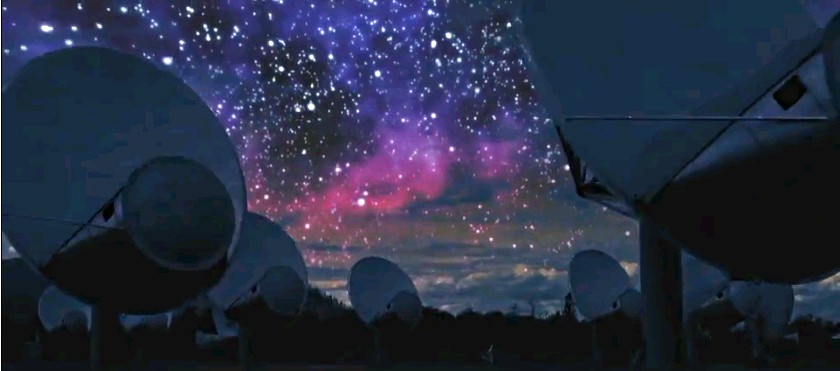[/caption] The
Allen Telescope Array (
ATA) has come online with its initial configuration of 42 antennas. The project, led by the SETI Institute, is a non-governmental project funded by Microsoft co-founder Paul Allen in which eventually 350 small radio antennas will scan the sky for signs of extraterrestrial intelligence. To test the system, the ATA sucessfully picked up the New Horizons probe on its way to Pluto. Senior SETI scientist Seth Shostak said at an event in San Francisco Tuesday night that the array could become strong enough by 2025 to look deep enough into space to find extraterrestrial signals. "We'll find E.T. within two dozen years," he said.
That's, of course, assuming the distance we can look into space will be increased with new instruments yet to be built, and that the projected computing power under
Moore's Law
actually happens.
Shostak estimated that if the assumptions about computing power and the strength of forthcoming research instruments are correct, we should be able to search as far out as 500 light years into space by 2025, a distance he predicted would be enough--based on scientist
Frank Drake's estimate
of there being 10,000 civilizations in our galaxy alone capable of creating radio transmitters--to find evidence of intelligent life that is broadcasting its existence.
Only time will tell.
For the New Horizons observation, made Sept. 10, operators of the ATA used a synthesized beam formed with 11 of the array's 6.1-meter (20 foot) antennas – a method called "beamforming" that electronically combines the antennas into a single virtual telescope. The 8.4-GHz spacecraft carrier signal was then fed into the SETI Prelude detection system.
"We're happy to be the ATA's new friend in the sky, helping SETI to verify the operations of their electronics," says New Horizons Principal Investigator Alan Stern. "It's also nice to know that someone else is checking in on us during our long voyage to Pluto and beyond."
And what does New Horizons look like to the Allen Telescope Array? This plot shows 678 hertz (Hz) of spectrum collected over 98 seconds. The New Horizons signal can be easily seen as a bright diagonal line, drifting at rate of -0.6 > Hz/second. [caption id="attachment_21001" align="alignnone" width="580" caption="What New Horizons looks like to The ATA. Credit: SETI Institute"]
[/caption]
Sources:
CNET
,
New Horizons
 Universe Today
Universe Today
